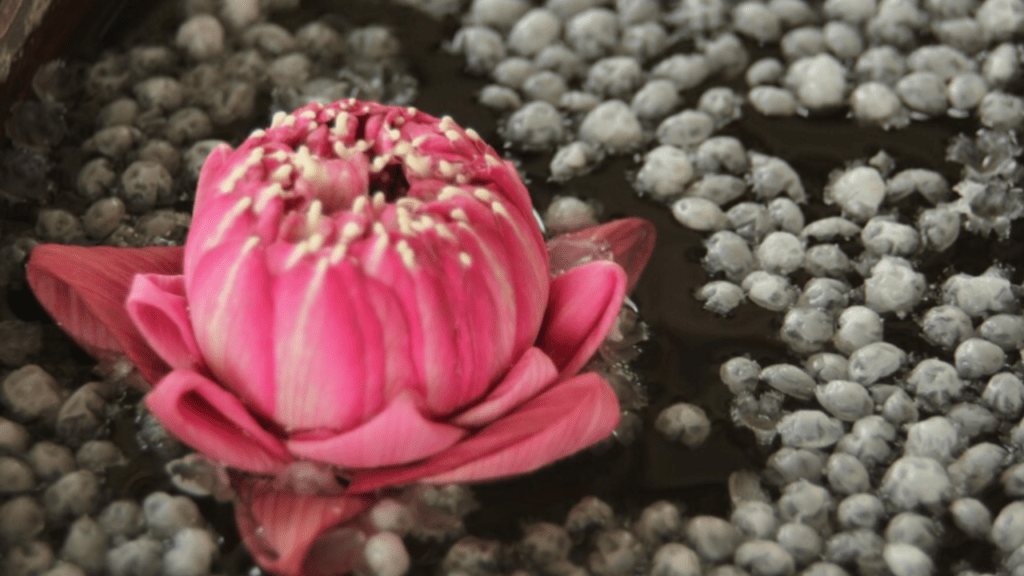
How to Grow Lotus Plant Seeds: A Step-by-Step Guide for Beautiful Blooms
Welcome to our step-by-step guide on how to grow lotus plant seeds! Whether you’re a gardening enthusiast or a beginner looking to add some beautiful blooms to your garden, this post will provide you with all the information and tips you need to successfully grow lotus plants from seeds. From the best planting techniques to essential care tips, we’ve got you covered. Let’s dive in and get your lotus plants thriving!
The process of growing lotus plants from seeds can be a rewarding and enjoyable experience. To start, you’ll need to gather the necessary supplies, including a container, soil, and of course, lotus seeds. Once you have everything you need, it’s time to get planting! Begin by preparing the soil in your container, making sure it is well-draining and nutrient-rich. Next, place the lotus seeds on top of the soil, gently pressing them down to ensure good soil contact. Then, cover the seeds with a thin layer of soil and water the container thoroughly. It’s important to keep the soil consistently moist, but be careful not to overwater. With patience and proper care, your lotus seeds will sprout and begin to grow into beautiful plants. As they mature, be sure to provide them with plenty of sunlight and continue to water them as needed. With the right care, you’ll soon be rewarded with stunning lotus blooms, adding beauty and tranquility to your garden. So go ahead and give growing lotus plants from seeds a try – you won’t be disappointed!
Table of Contents
ToggleUnderstanding Lotus Plant Seeds
Lotus plant seeds can be a beautiful addition to any garden. To plant lotus seeds, start by selecting a container that is at least 18 inches wide and 8 inches deep. Fill the container with heavy garden soil and then add a layer of sand on top. Next, place the lotus seeds on top of the soil, gently pressing them down to ensure good soil contact. Then, cover the seeds with a thin layer of soil and water the container thoroughly. It’s important to keep the soil consistently moist, but be careful not to overwater. With patience and proper care, your lotus seeds will sprout and begin to grow into beautiful plants. As they mature, be sure to provide them with plenty of sunlight and continue to water them as needed. With the right care, you’ll soon be rewarded with stunning lotus blooms, adding beauty and tranquility to your garden. So go ahead and give growing lotus plants from seeds a try – you won’t be disappointed!
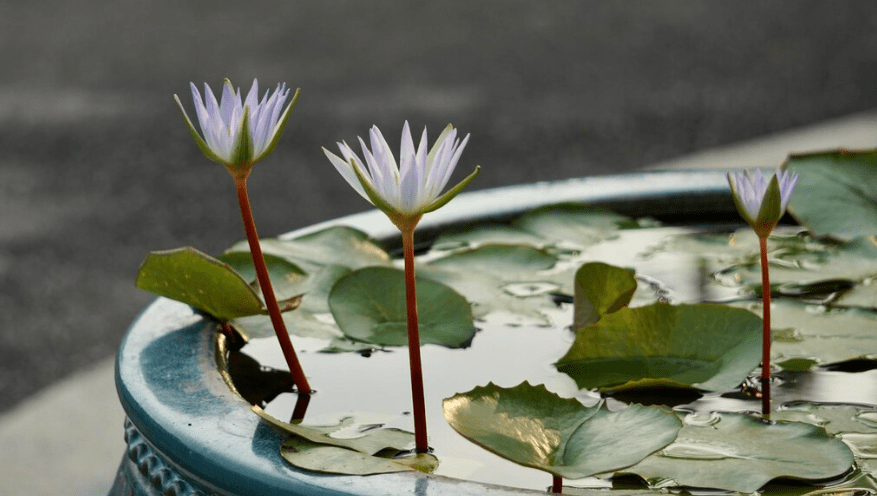
What Are Lotus Plant Seeds?
Lotus plant seeds are the seeds of the lotus flower, which is a beautiful aquatic plant known for its stunning blooms. To grow lotus plants from seeds, you can start by soaking the seeds in warm water for a few days until they begin to swell. Then, place the lotus seeds on top of the soil, gently pressing them down to ensure good soil contact. Cover the seeds with a thin layer of soil and water the container thoroughly, keeping the soil consistently moist but not overwatered. With patience and proper care, the lotus seeds will sprout and grow into beautiful plants. It’s important to provide them with plenty of sunlight and continue to water them as needed as they mature. Ultimately, with the right care, you’ll be rewarded with stunning lotus blooms, adding beauty and tranquility to your garden. So, if you’re interested in growing lotus plants from seeds, give it a try and enjoy the beautiful results!
Types of Lotus Plants
Sacred Lotus (Nelumbo nucifera)
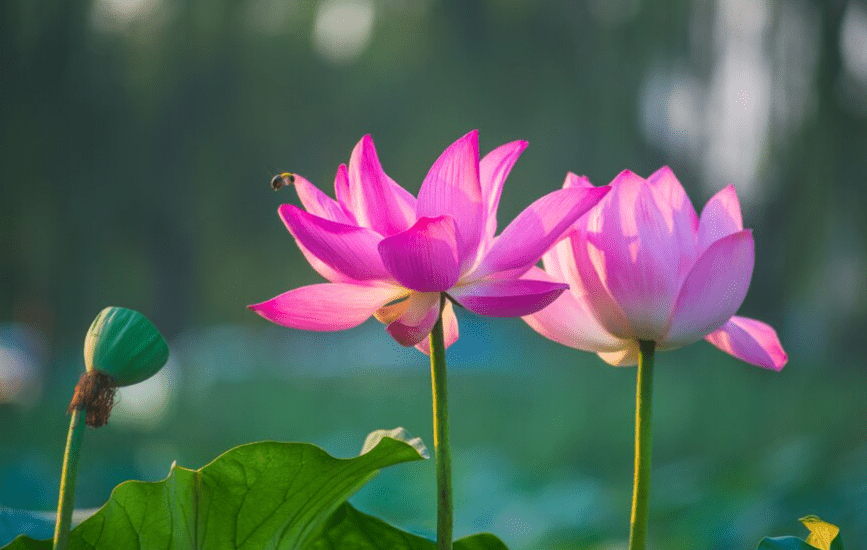
The Sacred Lotus, also known as Nelumbo nucifera, is a beautiful and sacred plant that holds great cultural significance in many parts of the world. It is known for its stunning pink blooms and large green leaves, making it a popular choice for water gardens and ponds. To grow lotus plants from seeds, you can start by soaking the seeds in warm water for a few days until they begin to swell. Then, place the lotus seeds on top of the soil, gently pressing them down to ensure good soil contact. Cover the seeds with a thin layer of soil and water the container thoroughly, keeping the soil consistently moist but not overwatered. With patience and proper care, the lotus seeds will sprout and grow into beautiful plants. It’s important to provide them with plenty of sunlight and continue to water them as needed as they mature. Ultimately, with the right care, you’ll be rewarded with stunning lotus blooms, adding beauty and tranquility to your garden. So, if you’re interested in growing lotus plants from seeds, give it a try and enjoy the beautiful results!
American Lotus (Nelumbo lutea)
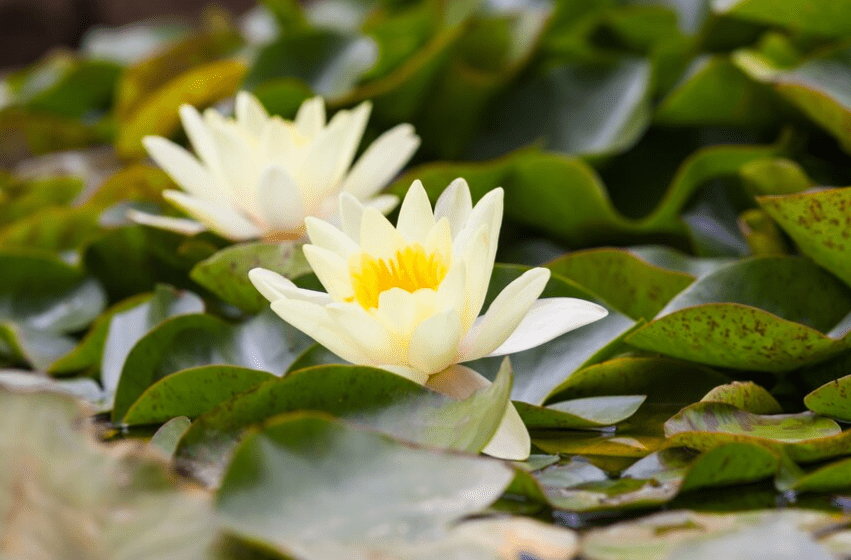
, also known as the yellow lotus, is a beautiful aquatic plant that can be grown from seeds. To grow lotus plants from seeds, you can start by soaking the seeds in warm water for a few days until they begin to swell. Then, place the lotus seeds on top of the soil, gently pressing them down to ensure good soil contact. Cover the seeds with a thin layer of soil and water the container thoroughly, keeping the soil consistently moist but not overwatered. With patience and proper care, the lotus seeds will sprout and grow into beautiful plants.
It’s important to provide them with plenty of sunlight and continue to water them as needed as they mature. Lotus plants are hardy and can survive in a range of temperatures, but they thrive in warm conditions. Ultimately, with the right care, you’ll be rewarded with stunning lotus blooms, adding beauty and tranquility to your garden.
So, if you’re interested in growing lotus plants from seeds, give it a try and enjoy the beautiful results!
Benefits of Growing Lotus Plants from Seeds
Growing lotus plants from seeds can be a fulfilling and rewarding experience. Not only do you get to witness the entire growth process, but you also get to enjoy the stunning beauty of lotus blooms in your garden. Lotus plants are known for their tranquil and serene presence, making them a perfect addition to any outdoor space.
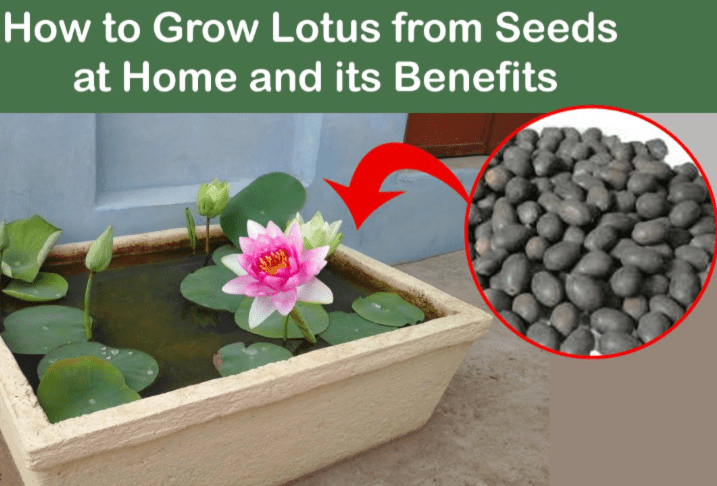
When you grow lotus plants from seeds, you have the opportunity to nurture and care for the plants from the very beginning. It’s a great way to connect with nature and learn about the intricate process of plant growth. Additionally, growing lotus plants from seeds allows you to choose from a wide variety of lotus species and cultivars, giving you the freedom to create a diverse and vibrant garden.
Furthermore, lotus plants have cultural and spiritual significance in many traditions around the world. By growing lotus plants from seeds, you can connect with this rich history and incorporate a meaningful symbol into your garden.
Overall, the benefits of growing lotus plants from seeds include the opportunity to witness the growth process, the ability to choose from a variety of lotus species, and the cultural and spiritual significance of lotus plants. If you’re interested in adding natural beauty and tranquility to your garden, consider growing lotus plants from seeds and enjoy the stunning results.
Preparing to Plant Lotus Seeds
Choosing the Right Lotus Seeds
Trusted Seed Suppliers
When you grow lotus plants from seeds, you have the opportunity to nurture and care for the plants from the very beginning. It’s a great way to connect with nature and learn about the intricate process of plant growth. Additionally, growing lotus plants from seeds allows you to choose from a wide variety of lotus species and cultivars, giving you the freedom to create a diverse and vibrant garden. Furthermore, lotus plants have cultural and spiritual significance in many traditions around the world. By growing lotus plants from seeds, you can connect with this rich history and incorporate a meaningful symbol into your garden. Overall, the benefits of growing lotus plants from seeds include the opportunity to witness the growth process, the ability to choose from a variety of lotus species, and the cultural and spiritual significance of lotus plants. If you’re interested in adding natural beauty and tranquility to your garden, consider growing lotus plants from seeds and enjoy the stunning results. And when looking for lotus seeds, it’s important to choose a trusted seed supplier to ensure the quality and authenticity of the seeds.
Selecting Viable Seeds
When it comes to selecting viable seeds for growing lotus plants, there are a few important factors to consider. First, it’s essential to choose seeds from a reputable supplier to ensure that you are getting high-quality, authentic seeds. Look for suppliers with positive reviews and a good reputation in the gardening community. Additionally, consider the specific variety of lotus plants you want to grow. Different lotus species and cultivars have different growing requirements, so make sure to choose seeds that are suitable for your climate and garden conditions. It’s also important to check the viability of the seeds before planting. Look for seeds that are plump, firm, and free from any signs of mold or damage. When selecting viable seeds, it’s important to take your time and choose carefully to ensure the best possible start for your lotus plants. With the right seeds and proper care, you can enjoy the beauty and tranquility of lotus plants in your garden.
Preparing Your Planting Area
Before you begin planting lotus plants, it’s important to prepare your planting area properly. First, choose a location that receives at least 6 hours of sunlight per day and has access to water. Lotus plants thrive in full sun and in shallow water, so make sure to choose a location that meets these requirements. Once you have chosen the right spot, it’s time to prepare the soil. Lotus plants prefer rich, loamy soil with a slightly acidic pH. You can improve the soil by adding organic matter such as compost or well-rotted manure. This will help create a healthy environment for your lotus plants to grow. Once the soil is prepared, you can begin planting your lotus seeds or tubers. If you are planting seeds, make sure to plant them in shallow, muddy water and keep them moist until they germinate. If you are planting tubers, place them in shallow water and cover them with a layer of soil. With the right preparation, your lotus plants will have the best chance of thriving in your garden.
Germinating Lotus Plant Seeds
Scarification Process
The scarification process is an important step in germinating lotus plant seeds. This process involves breaking or weakening the hard outer seed coat to allow water and air to penetrate the seed, promoting germination. To scarify lotus seeds, you can carefully file or nick the seed coat with a small knife or use sandpaper to gently rub the seed coat until it is slightly abraded. After scarification, you can soak the seeds in warm water for 24-48 hours before planting them in shallow, muddy water. This process will help the seeds germinate and grow into healthy lotus plants. Remember to handle the seeds with care to avoid damaging the delicate embryo inside. With proper scarification, you can successfully germinate lotus plant seeds and enjoy the beauty of these aquatic plants in your garden.
Soaking the Seeds
Is an important step in the germination process for lotus plant seeds. After scarification, you should soak the seeds in warm water for 24-48 hours before planting them. This helps to soften the seed coat and allows the seeds to absorb the moisture they need to germinate. You can use a shallow container filled with warm water to soak the seeds, making sure to change the water every 12 hours to keep it fresh. Once the seeds have been soaked, you can then plant them in shallow, muddy water to encourage germination and growth. Be sure to handle the seeds with care to avoid damaging the delicate embryo inside. With the proper soaking and planting method, you can successfully germinate lotus plant seeds and enjoy the beauty of these aquatic plants in your garden.
Planting Germinated Lotus Seeds
Preparing the Soil and Container
The first step in preparing the soil and container for planting germinated lotus seeds is to choose a shallow container that is at least 12 inches deep and 18 inches wide. Fill the container with rich, loamy soil and place it in a location where it will receive full sun for at least six hours a day. Before planting the germinated seeds, make sure the soil is moist but not waterlogged.
When you are ready to plant the germinated lotus seeds, create a small depression in the soil and gently place the seeds inside, covering them with a thin layer of soil. Make sure to keep the soil consistently moist, but not waterlogged, as the seeds begin to sprout and grow.
It’s important to keep the container in a warm and sunny location and monitor the soil moisture regularly to ensure the seeds have the best conditions for successful growth. With the right soil and container preparation, you can look forward to beautiful lotus plants gracing your garden.
Planting Techniques
Planting germinated lotus seeds requires careful preparation of the soil and container. To start, choose a shallow container that is at least 12 inches deep and 18 inches wide. Fill the container with rich, loamy soil and place it in a location that receives full sun for at least six hours a day. Before planting the germinated lotus seeds, ensure that the soil is moist but not waterlogged. When you are ready to plant, create a small depression in the soil and gently place the seeds inside, covering them with a thin layer of soil. It’s important to keep the soil consistently moist, but not waterlogged, as the seeds begin to sprout and grow. Keep the container in a warm and sunny location and monitor the soil moisture regularly to provide the best conditions for successful growth. With the right soil and container preparation, you can look forward to beautiful lotus plants gracing your garden.
Caring for Lotus Plants
Watering and Nutrient Needs
Lotus plants require a shallow container filled with rich, loamy soil and plenty of sunlight to thrive. Before planting the germinated lotus seeds, it’s important to ensure that the soil is moist but not waterlogged. As the seeds sprout and grow, it’s essential to keep the soil consistently moist, but not waterlogged, and to provide the plants with the right amount of sunlight. Regular monitoring of soil moisture and proper care will help the lotus plants grow successfully. With the right soil and container preparation, you can look forward to beautiful lotus plants gracing your garden.
Sunlight and Temperature Requirements
Lotus plants require a warm and sunny location to thrive. It’s important to keep the container in a spot that receives plenty of sunlight and to monitor the soil moisture regularly to ensure the best conditions for successful growth. Additionally, the soil should be rich and loamy to provide the necessary nutrients for the plants. It’s important to avoid waterlogging the soil, so be sure to water the plants carefully and provide the right amount of sunlight. By taking proper care of the soil and monitoring the sunlight and temperature requirements, you can look forward to beautiful lotus plants gracing your garden.
Managing Pests and Diseases
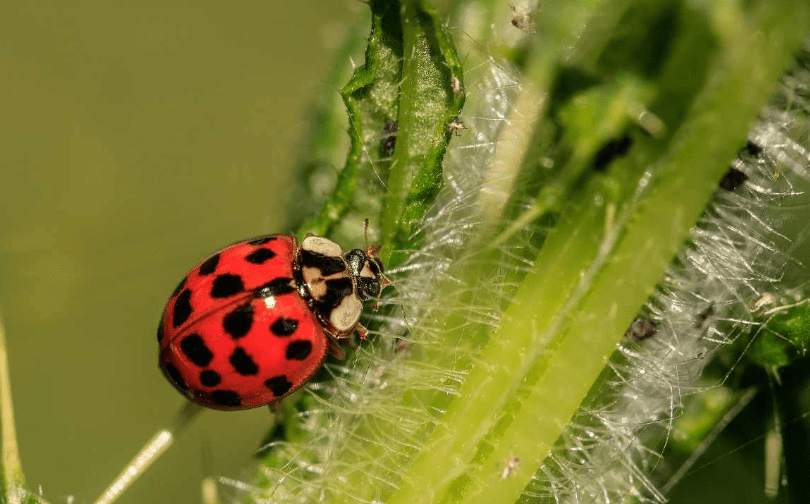
Is an important aspect of maintaining a healthy garden, and this also applies to lotus plants. It’s important to regularly monitor the plants for any signs of pests or diseases and take appropriate action to prevent them from spreading. One common pest for lotus plants is the aphid, which can be controlled using insecticidal soap or neem oil. Additionally, keeping the plants well-watered and fertilized can help them to resist pests and diseases. It’s also important to remove any dead or diseased plant material to prevent the spread of diseases. By staying vigilant and taking proactive measures, you can protect your lotus plants and ensure they continue to thrive.
Transplanting Lotus Plants
is a great way to ensure that they continue to grow and flourish in your garden. When transplanting lotus plants, it’s important to choose a location that provides the right amount of sunlight and has well-draining soil. You’ll want to gently remove the lotus plant from its current location, being careful not to damage the roots. Then, carefully plant the lotus in its new location, making sure to water it thoroughly. It’s also important to regularly water the newly transplanted lotus plant to help it establish itself in its new environment. With proper care and attention, your transplanted lotus plants will continue to thrive and bring beauty to your garden.
Common Issues and Troubleshooting
Germination Problems
Can be a frustrating challenge for gardeners. Some common issues that can affect germination include improper planting depth, poor soil quality, and inadequate moisture. To address these issues, it’s important to ensure that seeds are planted at the correct depth and in well-draining soil. Additionally, regular watering and proper maintenance can help to promote successful germination. If you encounter germination problems, it’s important to stay proactive and make adjustments to create a more favorable environment for your seeds to thrive. By addressing these issues and taking proactive measures, you can increase the likelihood of successful germination and healthy plant growth.
Growth Challenges
Growth Challenges are a common part of gardening, but with the right care and attention, you can overcome them and help your plants thrive. One common challenge that gardeners face is germination problems. This can be frustrating, but it’s important to address the issues and make adjustments to create a more favorable environment for your plants to grow. Common issues that can affect germination include improper planting depth, poor soil quality, and inadequate moisture. To address these issues, make sure to plant your seeds at the correct depth and in well-draining soil. Additionally, regular watering and proper maintenance can help to promote successful germination. By taking proactive measures and staying attentive to the needs of your plants, you can increase the likelihood of healthy growth and a beautiful garden.
Pest and Disease Managemen
Pest and Disease Managemen are important aspects of gardening that can significantly impact the health and growth of your plants. It’s essential to be proactive in preventing and managing pest and disease issues to ensure the success of your garden. One common challenge in pest management is identifying the specific pests that are affecting your plants. It’s important to regularly inspect your garden for signs of pest damage and to research and implement the most effective pest control methods for your specific plants. Additionally, maintaining a clean and healthy garden environment can help to reduce the likelihood of pest infestations. In terms of disease management, it’s crucial to be diligent in monitoring your plants for any signs of disease and to take prompt action to prevent the spread of infection. This may include pruning affected areas, using disease-resistant plant varieties, and practicing proper sanitation in your garden. By prioritizing pest and disease management, you can protect the health and vitality of your garden and ensure a successful growing season.
Harvesting Lotus Seeds and Propagation
When and How to Harvest Lotus Seeds

Lotus seeds are a popular ingredient in many Asian cuisines and are also used for medicinal purposes. When it comes to harvesting lotus seeds, timing is key. The best time to harvest lotus seeds is when the seed pods have turned from green to yellow or brown, indicating that the seeds are fully mature. To harvest the seeds, carefully cut the seed pods from the plant and remove the seeds from the pod. Once you have harvested the seeds, it is important to let them dry completely before storing them. This will help to ensure that the seeds remain viable for planting or cooking. Lotus seeds can be propagated by planting them in a mixture of soil and water, making sure to keep the seeds submerged in water until they sprout. With the right timing and proper care, you can successfully harvest lotus seeds and propagate new plants for your garden.
Storing and Preserving Seeds for Future Planting
Is essential for maintaining a healthy and vibrant garden. One of the key elements of seed preservation is ensuring that the seeds are properly dried and stored in a cool, dry place. This will help to maintain the viability of the seeds for future planting. It is important to label and organize the seeds to keep track of their specific varieties and planting requirements. Additionally, storing seeds in airtight containers or sealed bags can help to prevent moisture and pests from damaging the seeds. By taking the time to properly harvest, dry, and store seeds, you can ensure a successful and bountiful garden for years to come.
In conclusion, growing lotus plant seeds can be a rewarding and beautiful experience. By following the step-by-step guide and taking proper care of your plants, you can enjoy the stunning blooms of lotus flowers in your garden. Remember to be patient and attentive to the needs of your lotus plants, and you will be rewarded with a stunning display of natural beauty. Happy gardening!
Frequently asked questions And Answer
First, you will need to scarify the seeds by gently filing down the hard outer coating to help them absorb water. Then, soak the seeds in warm water for 24 hours to soften them before planting.
Lotus plants thrive in rich, loamy soil that is heavy in organic matter. A mixture of clay and river sand is ideal for planting lotus seeds.
Plant the lotus seeds in a large container filled with the prepared soil, making sure to cover the seeds with a layer of soil. Then, submerge the container in a pond or other water feature, keeping the water level at about 6 inches above the soil.
Lotus plants should be watered regularly, keeping the soil consistently moist but not waterlogged. As the plant grows, you can increase the water level to about 18 inches above the soil.
Lotus seeds typically take about 2-4 weeks to germinate, but it can take longer in some cases. Be patient and continue to care for the seeds as they grow.
Lotus plants thrive in full sun and warm temperatures. They also require a lot of space to spread their leaves and grow, so be sure to plant them in a spacious area.
Once the lotus plants begin to grow, it’s important to continue to keep the water level consistent and provide them with plenty of sunlight. You may also need to fertilize the plants occasionally to encourage healthy growth and blooming.
Lotus plants typically bloom in the summer, producing stunning, fragrant flowers that can be enjoyed throughout the season. With proper care and attention, you can look forward to a beautiful display of lotus blooms in your water feature.
